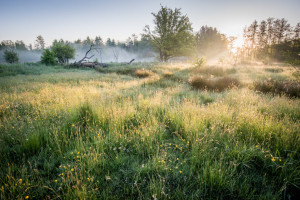 As I look out on my winter-weary garden, I am reminded of the newest fashion in gardening–”rewilding”. It is popping up with increasing frequency in gardening publications, especially those emanating from Great Britain. Clearly as far as “rewilding” goes, I am fashion forward. In fact, at this moment, considering all that I neglected to do last fall, I may not even need the “re” in “rewilding”.
As I look out on my winter-weary garden, I am reminded of the newest fashion in gardening–”rewilding”. It is popping up with increasing frequency in gardening publications, especially those emanating from Great Britain. Clearly as far as “rewilding” goes, I am fashion forward. In fact, at this moment, considering all that I neglected to do last fall, I may not even need the “re” in “rewilding”.
“Rewilding” has long been used by conservationists to describe the restoration of degraded ecosystems on a large scale by removing invasive species, restoring natural habitats and curbing development of rewilded areas. But as habitat gardening, wildlife gardening, pollinator gardening and other forms of eco-friendly horticulture have gained momentum, people have applied the rewilding concept to home landscapes. If you do an internet search these days, you will find all kinds of articles with titles like “Five easy ways to rewild your garden.” The best indication that rewilding has really caught on is the birth of a new verb–”to rewild”.
So how do you rewild your garden? The first step, according to many guides, is to let weeds grow. This is anathema to tidy gardeners, especially those with an addiction to pre-emergent herbicides.
Weeds grow freely in my garden and some of them, especially violets and the clover that grows so enthusiastically in the lawn, get a pass from me. I draw the line at onion grass or Allium vineale. It is an alien invasive anyway and its presence violates the rewilding concept.
Letting the grass grow long is another gateway to rewilding, but letting the front yard become meadow-like generally upsets the neighbors and, in some places, may bring down the wrath of the local municipality. I compromise by setting the mower a little higher and keeping the grass free of herbicides or supplemental water. My grass is so healthy and springy that a friend who aspires to a putting green-like lawn, does not believe me when I tell him that my grass is completely neglected.
Mulching with organic material, like bark chips, is a rewilding step that helps build the soil, and keeps down unwanted vegetation. It is easier on the back than digging and a lot less work than tilling, which is a plus for all weekend yard warriors.
If you can’t turn your property into a full-fledged wildlife preserve harboring a plethora of native species, you can leave a corner or two undisturbed. Many of us do that by default. The southeast corner of my back garden wins the prize for most frequently neglected spot. If I can control the rampant English ivy, which is not native, it might make an excellent, reasonably unobtrusive mini-habitat.
Untended corners can also be home to other rewilding elements like log piles and/or rockeries.
Reducing hard landscaping, like concrete paths, helps to ease runoff water issues, but if your landscape contains outdoor living spaces, the best approach is to pave with porous materials like pea gravel or non-mortared pavers. Dry-laid stone walls are a boundary option, because they also have lots of crevices for small plants, animals and insects.
Many of us want some kind of boundary between our properties and those of our neighbors. Instead of fencing, rewild with a native hedge or, even better, a mixed native hedge for biodiversity.
One thing most of the rewilding articles neglect to mention is the fact that a lot of rewilding has taken place in suburban areas without any human help at all. Deer, those monarchs of the forest and scourge of home gardeners, are everywhere and the populations of racoons, skunks and possums have all surged. Fifteen years ago it was rare to see a fox in my town, now they are sighted regularly.
Despite the increase in some species, others, especially insects and birds, are declining. A little rewilding can help a lot of those smaller creatures and play a small part in making the planet healthier.
One last thought about rewilding–doing it means encouraging a wide variety of species, not just the ones that are cute and likable. You can’t encourage butterflies without also tolerating the beatles, moths, wasps and earwigs that come with them. There is also no way to “opt out” of skunks.
Fortunately, if you do a little rewilding and tend your lawn and garden along organic lines, the ecosystem will eventually balance out. The birds will eat at least some of the bugs you don’t want and the deer may even browse on weeds in your rewilded corner. All species, including the human ones, will live just a little better.
